
4.1.Add New Profile ↑ Back to Top
To add new profile,
- Go to the Admin panel.
- On the left navigation bar, click the EBAY INTEGRATION menu.
The menu appears as shown in the following figure:

- Click Profile Manager.
The Manage Profile page appears as shown in the figure:
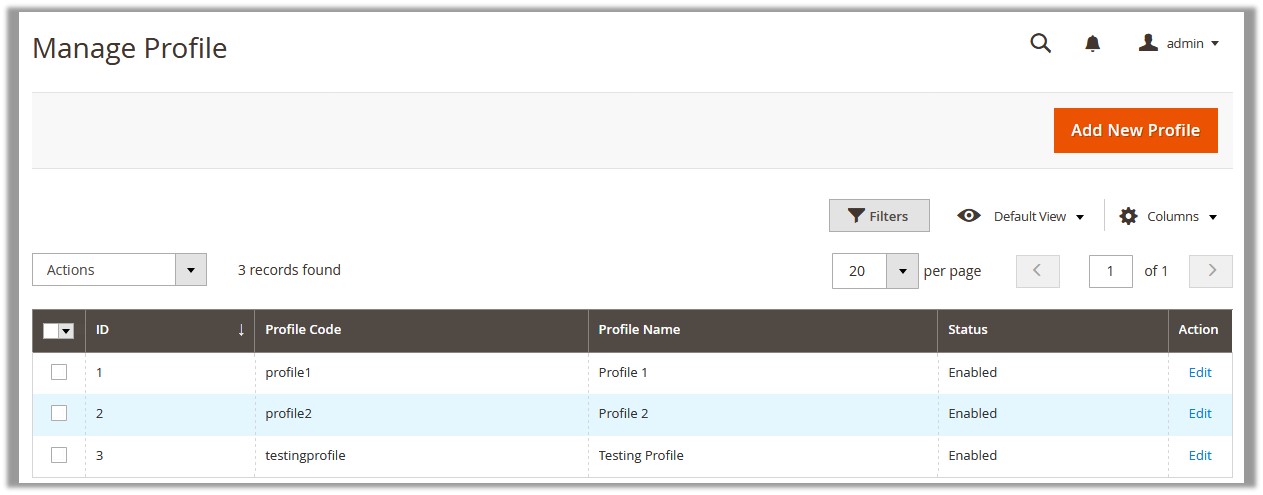 On this page all the available profiles are listed.
On this page all the available profiles are listed. - Click the Add New Profile button.
The page appears as shown in the following figure:

- In the right panel, under Profile Information, do the following steps:
- In the Profile Code box, enter a profile code.
Note: It is only for the internal use. Use the unique profile code with no spaces. Start with small letters. - In the Profile Name box, enter the name of the profile.
Note: Use the unique name to identify the profile. - In the Status list, select Active to enable the profile.
Note: The Inactive option disables the profile.
- In the Profile Code box, enter a profile code.
- In the left navigation panel, click the Category & Attribute menu.
The page appears as shown in the following figure:
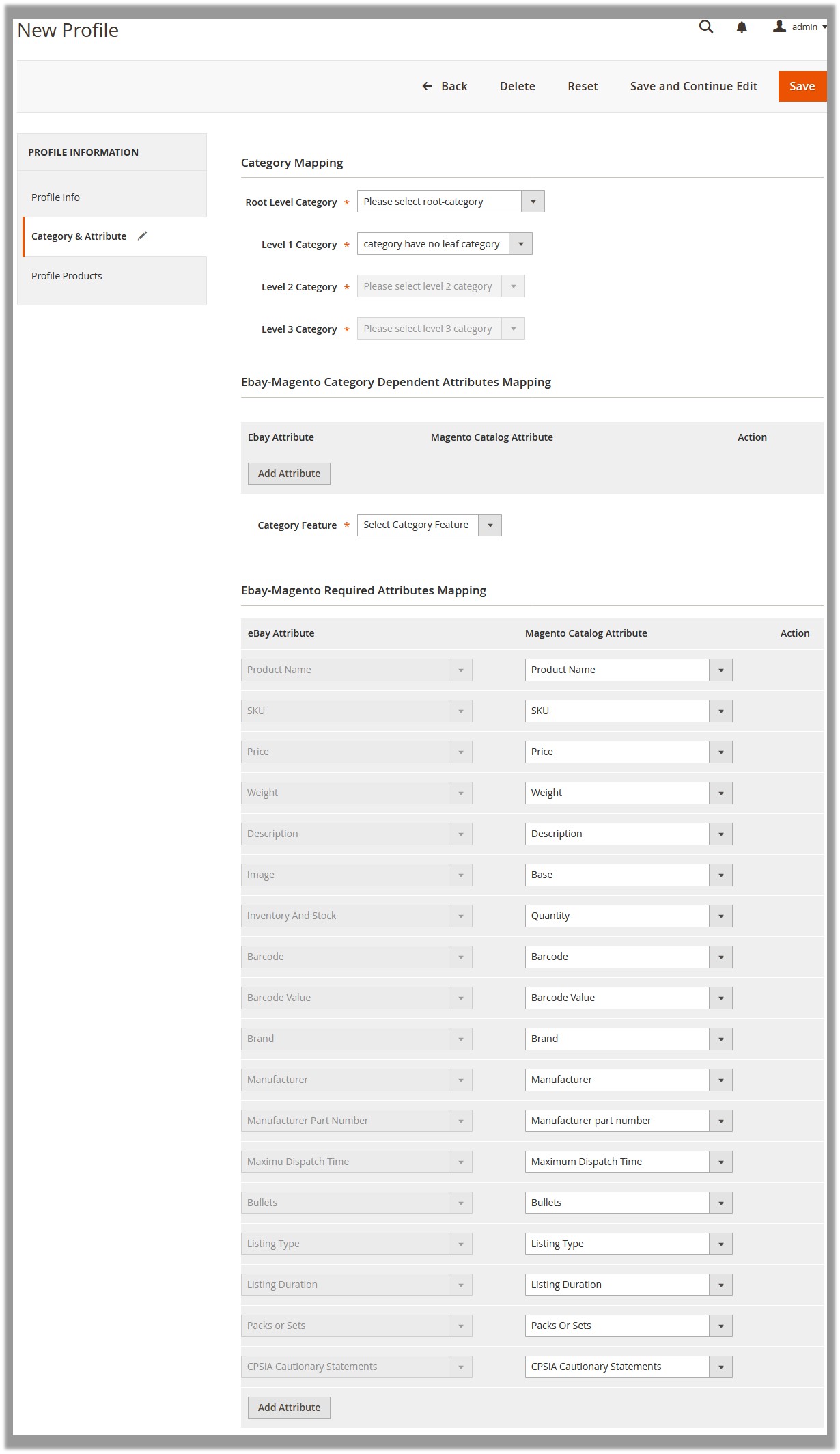
- In the right panel, under Category Mapping, do the following:
- In the Root Level Category list, select the required category that the admin wants to map.
Note: As soon as the admin selects the root category, the Level 1 Category list is enabled with the list of the required sub-categories based on the Root Level Category selection. - In the Level 1 Category list, select the required sub-category that the admin wants to map.
Notes:- Once again, based on the Level 1 Category selection the Level 2 Category list is enabled with the list of the required sub-categories relevant to Level 1 Category.
- Every time the admin selects the category or sub-category, the next level category list is enabled with the respective sub-categories list.
- The Category has no leaf category option means there are no further sub-categories for the selected category or sub-category.

- Click the Save and Continue button.
- In the Root Level Category list, select the required category that the admin wants to map.
- Scroll down to the Ebay-Magento Category Dependent Attributes Mapping section.
Note: Depending upon the selection of the category and the sub-categories, the eBay and Magento store attributes appear under the Ebay-Magento store Category Dependent Attributes Mapping section. It means the attributes available are dependent upon the selected the last level category. Admin can map the Magento Catalog Attribute to the required eBay Attribute.
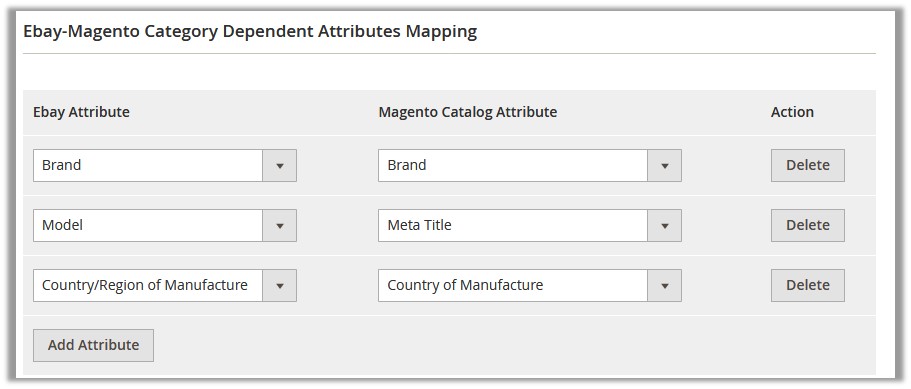
- Click the Add Attribute button.
The Ebay Attribute list, the Magento Catalog Attribute list, and the associated Delete button in the Action column appear. - In the Ebay Attribute list, select the dependent attribute to map it with corresponding Magento store attribute and in the Magento Catalog Attribute list, select the dependent Magento store attribute to map it with the corresponding eBay attribute.
- Again click the Add Attribute button to add the new attribute to map the Ebay-Magento store category dependent attributes.
- Repeat the procedure, if required.
- In the Category Feature list, select the required option.
- Click the Save and Continue button.
- Click the Add Attribute button.
- Scroll down to the Ebay-Magento Required Attributes Mapping section, and do the following steps.
- In the Magento Catalog Attribute column, select the required Magento store attribute to map it with the corresponding eBay attribute.
- Repeat the mapping of all the required dependent Magento store attributes listed with the corresponding eBay attributes.
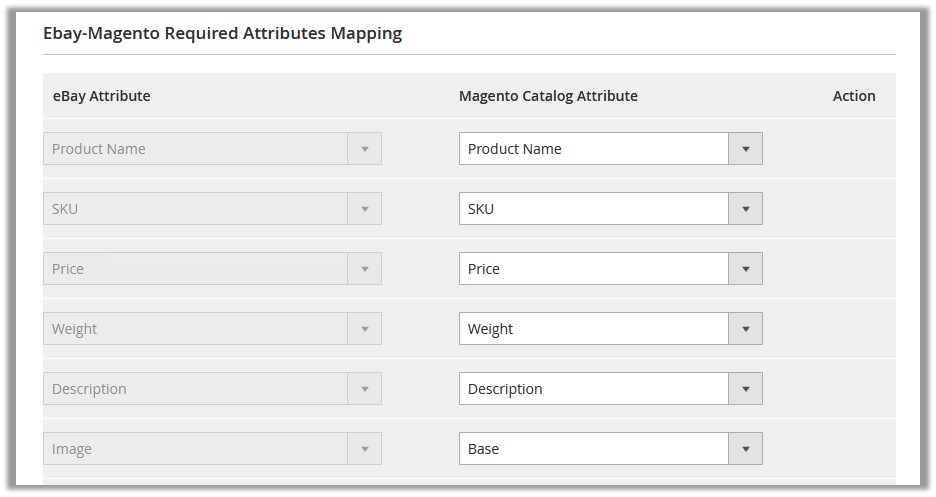
- Click the Add Attribute button to add new attribute for mapping.
- Click the Save and Continue button.
- In the left navigation panel, click the Profile Products menu.
The page appears as shown in the following figure:

Since no products are assigned to the profile, there are no products listed in the table. - Click the Reset Filter button.
All the products are listed in the table as shown in the following figure:
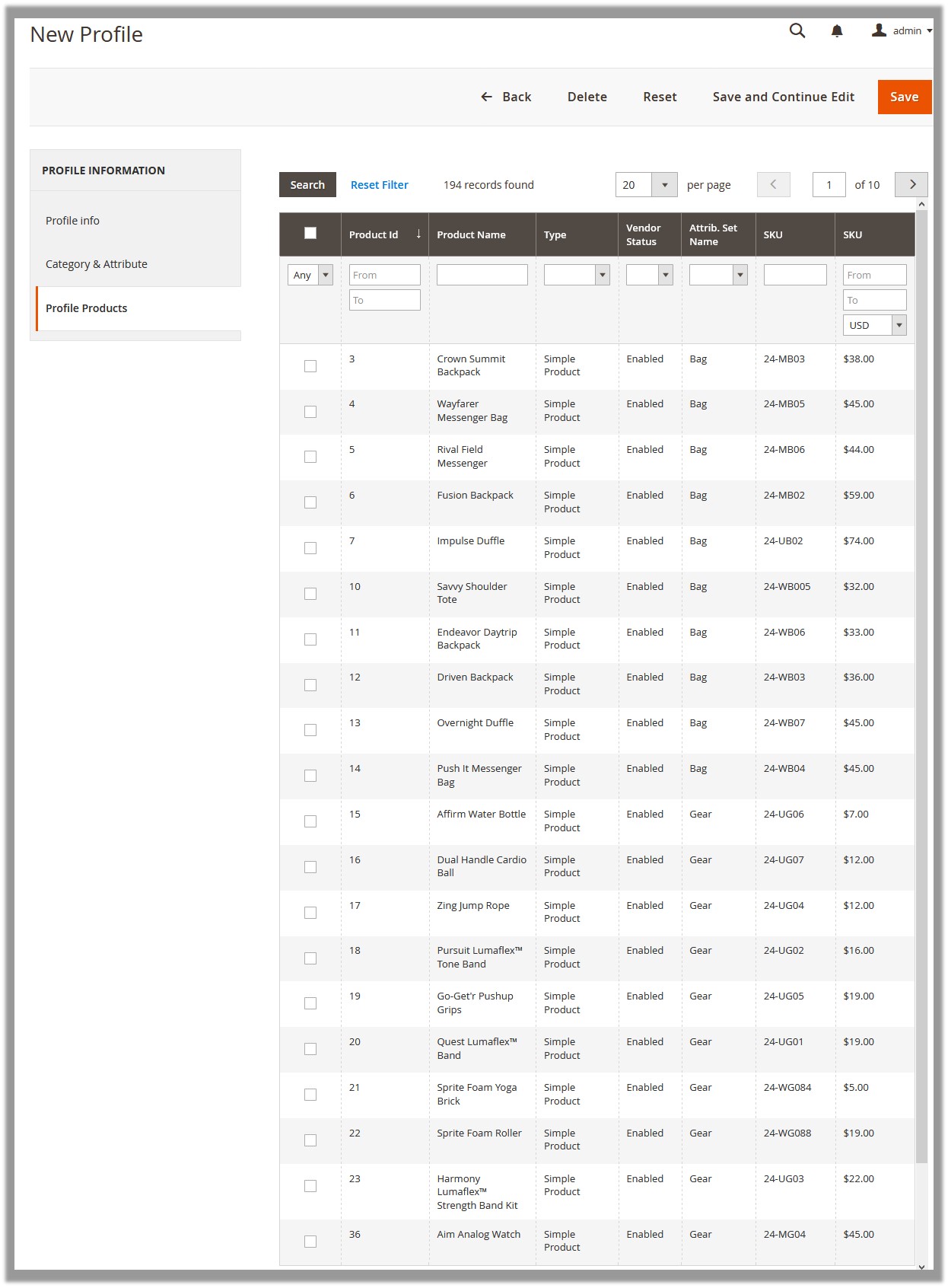
- Select the check box associated with the required product that the admin wants to assign to the new profile.
A warning message appears if the selected product is already assigned to any profile; as shown in the following figure:

- Click the OK button.
The check box is selected and the product is assigned to the profile. - Click the Save button.
The created profile is saved and listed on the Manage Profile page.
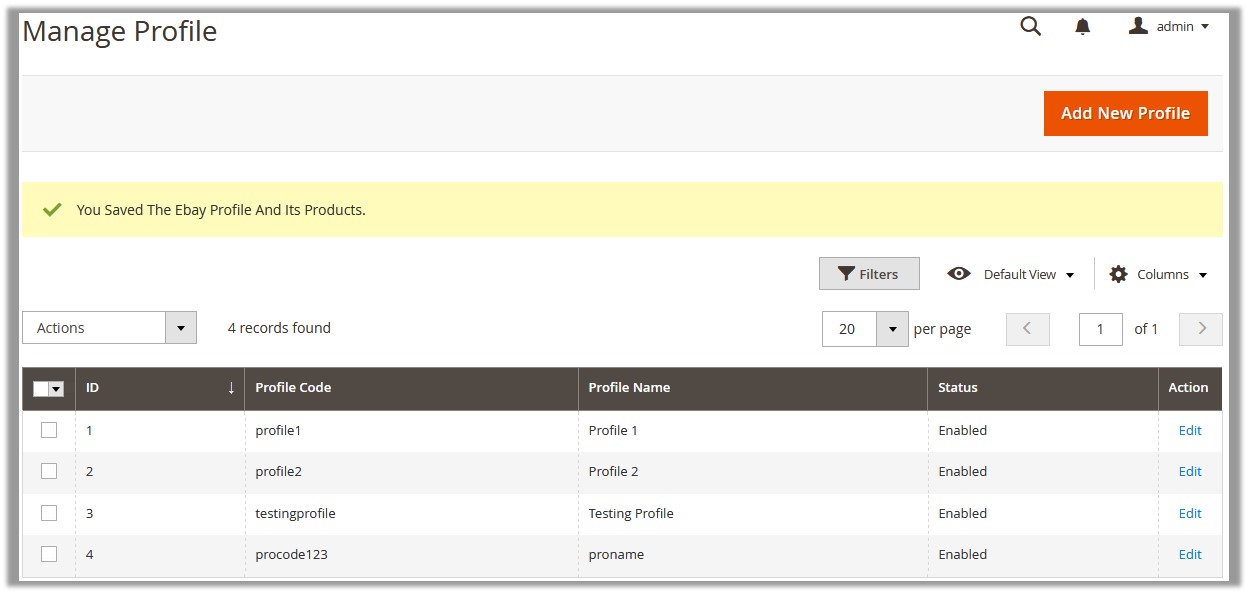
×













Leave a Reply
You must be logged in to post a comment.